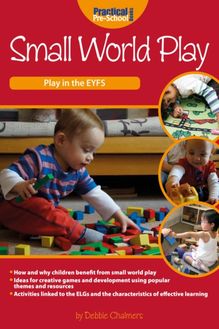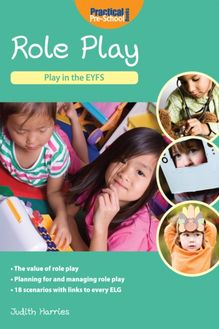-
 Univers
Univers
-
 Ebooks
Ebooks
-
 Livres audio
Livres audio
-
 Presse
Presse
-
 Podcasts
Podcasts
-
 BD
BD
-
 Documents
Documents
-
- Cours
- Révisions
- Ressources pédagogiques
- Sciences de l’éducation
- Manuels scolaires
- Langues
- Travaux de classe
- Annales de BEP
- Etudes supérieures
- Maternelle et primaire
- Fiches de lecture
- Orientation scolaire
- Méthodologie
- Corrigés de devoir
- Annales d’examens et concours
- Annales du bac
- Annales du brevet
- Rapports de stage
La lecture à portée de main
Vous pourrez modifier la taille du texte de cet ouvrage
Découvre YouScribe en t'inscrivant gratuitement
Je m'inscrisDécouvre YouScribe en t'inscrivant gratuitement
Je m'inscrisEn savoir plus
Vous pourrez modifier la taille du texte de cet ouvrage
En savoir plus

Description
Sujets
Informations
| Publié par | Andrews UK |
| Date de parution | 31 mars 2020 |
| Nombre de lectures | 0 |
| EAN13 | 9781912611300 |
| Langue | English |
| Poids de l'ouvrage | 4 Mo |
Informations légales : prix de location à la page 0,0650€. Cette information est donnée uniquement à titre indicatif conformément à la législation en vigueur.
Extrait
Small World Play
Play in the EYFS
Published by Practical Pre-School Books, A Division of MA Education Ltd, St Jude’s Church, Dulwich Road, Herne Hill, London, SE24 0PB. Tel 020 7738 5454 www.practicalpreschoolbooks.com
Main front cover photo and centre circle photo taken by Andy Chalmers. All photos inside the book taken by Andy Chalmers, except for the images on p. 7 (bottom), p. 26 (bottom), p. 36 (bottom), p. 38 (bottom), p. 65 and p. 71. All images in the book © MA Education Ltd.
All products and company names mentioned throughout the book are trademarks™ or registered® trademarks of their respective holders. Use of them does not imply any affiliation with or endorsement by them. Practitioners should take the recommended health and safety precautions with equipment provided. It is the responsibility of the practitioners to ensure that the resources provided are suitable for all children in the setting and necessary risk assessments should be carried out where appropriate.
All rights reserved. No part of this publication may be reproduced, stored in a retrieval system, or transmitted by any means, electronic, mechanical, photocopied or otherwise, without the prior permission of the publisher.
Play in the EYFS: Small World Play © MA Education Ltd 2018.
2020 digital version converted and distributed by Andrews UK Limited www.andrewsuk.com
About the book
This book is intended to be a practical resource for practitioners to use in their daily work with children in the Early Years Foundation Stage. It need not be read from start to finish, but should be available to all staff within childcare and education settings, so that practitioners may dip into it whenever they need ideas or inspiration on a particular topic, or more general advice and guidance on the uses and values of small world play.
Part 1 explains clearly how and why young children need and benefit from this type of play and how it can contribute to their learning and development in all areas, as well as providing enjoyment and strengthening bonds and relationships. Practitioners are encouraged to teach and support small world play with children throughout the early years and beyond, using a variety of resources from traditional wooden blocks to detailed characters and models.
Part 2 covers in detail a different small world theme, such as people, animals, vehicles and buildings, and demonstrate how the suggested games and activities can be linked to the early learning goals within the three prime and four specific areas of learning and development, as well as the characteristics of effective learning.
Children can build simple structures for small people with traditional wooden blocks.
The links to the early learning goals contain some overlap and slight repetition between chapters and themes. This is necessary to allow each chapter to work as a stand alone resource, so that they may be read in any order and need not rely on previous knowledge or having read any particular chapter before another. In this way, practitioners may always follow the interests of their children and encourage play that is appropriately stimulating and challenging, ensuring that children will wish to continue to engage with and learn from the activities as they reach each new age and stage of development.
Each idea offered is intended as an example or a starting point, from which practitioners and children can create their own games and stories, explore and experiment with their own ideas, work on their own chosen tasks and set their own challenges. Through absorbing and satisfying play within an enabling environment, children can learn and acquire new skills, build positive relationships among their peers and with adults, increase concentration, perseverance and stamina. They can plan, review and think critically, solve their own problems and develop as individuals, at a pace that is right for them.
Familiar themes such as schools and playgrounds are popular with children in their small world play.
Ideas may be adapted appropriately by adults working with children of all ages, at all stages and at all levels of ability, including the very able and those with special educational needs or disabilities (SEND). Small world play with popular characters and mixed resources can be particularly successful for groups of children of mixed ages and ability levels, with the guidance and support of experienced practitioners.
The possibilities within small world play are limitless and practitioners who provide resources, encouragement and support for this type of play will be rewarded as they watch happy children learn and develop in a balanced, constructive and purposeful manner. The ultimate aim is to develop children’s creativity and imagination, so that they may take these qualities with them throughout their lives and always make the most of the opportunities offered to them.
Offer different resources together, such as popular engines, other vehicles and traditional blocks, and support children as they use them creatively.
Safety note: Many small world toys are potential choking hazards and therefore unsuitable for under-threes. All children under five should be carefully supervised by responsible adults while playing with small pieces to ensure their safety.
Games become more complex as children develop their fine motor control, patience and imagination.
What is small world play?
Whether they are offered play people, model animals, toy vehicles, miniature buildings or natural items that are collected in the garden, or whether they use a collection of toys and pieces which allows children to create a world on a small scale, this will enable them to take control and direct what happens within that world.
Children will first re-create some events that they will have experienced in their own lives, playing out day to day events to understand the comfort and the security of familiar routines. Just as well rediscovering certain bad or sad things or experiences in an attempt to slow down the order and pace of events and at the same time make sense of what happened and the reason why it happened. Children may then go on to set up more elaborate games and imagine rich fantasies, playing out different scenarios of what they would like to happen or exploring the many possible and different ways in which situations can change and develop, according to people’s behaviour and circumstances.
Children engage readily with basic play resources when they are presented as popular characters.
Why is small world play so important?
Small world play has a huge role to play in developing children’s creativity and imagination, logical thinking, speech and language abilities, fine motor control and manipulative skills, problem solving, perseverance, social and emotional skills and understanding of the world.
This type of play is so valuable because it gives children space, time and opportunities to make sense of the confusing world around them, to try out ideas, practise skills and become absorbed in imaginative and rewarding play, both alone and with siblings or friends.
Those children who do not engage with small world play of their own accord, maybe due to a lack of experience or opportunity or maybe because they have special needs or other learning difficulties, should be introduced to it at a very simple level. They should be encouraged to play with an adult until they understand and value the opportunities that this provides and are more able to use it as a form of expression. They may then gradually be encouraged to join in with their peers and create a more satisfying play that allows them to build and develop creative and imaginative skills.
Children develop their social and emotional skills through sharing small world play with their peers.
Some children may find it difficult to play with small world characters if they have a visual impairment or a physical disability. In such case, practitioners must think creatively, considering the needs of each individual child. The need to find ways for them to be able to join in with games together with peers or to explore and manipulate pieces and design imaginative worlds either alone or with the help of adults. All children with special educational needs or disabilities (SEND) should be supported effectively in order to learn and fully benefit from small world play.
Providing a particular type of construction kit alongside popular small world figures encourages children to take their characters to explore a new location.
Children are very small players within the world, who often have to fall in with the plans and activities of others and always have to accept the guidance of those who are older.
When they set up small worlds of their own, they are immediately elevated to the roles of organiser, controller and decision maker and can experiment and make mistakes without fear of problems or repercussions.
Offering easily recognisable characters as small world play pieces inspires children to retell favourite stories.
The value of play involving popular stories and characters
Small children are attracted to the stories and characters that are specifically designed for them and marketed in books, television programmes, DVDs and other merchandise. They will have particular favourites that may be bought for them as presents by their families, to play with at home. There may also be popular characters, that appeal to most of the children, available in early years settings.
While settings will wish to avoid spending their budget on flimsy new toys based on current trends that will
-
 Univers
Univers
-
 Ebooks
Ebooks
-
 Livres audio
Livres audio
-
 Presse
Presse
-
 Podcasts
Podcasts
-
 BD
BD
-
 Documents
Documents
-
Jeunesse
-
Littérature
-
Ressources professionnelles
-
Santé et bien-être
-
Savoirs
-
Education
-
Loisirs et hobbies
-
Art, musique et cinéma
-
Actualité et débat de société
-
Jeunesse
-
Littérature
-
Ressources professionnelles
-
Santé et bien-être
-
Savoirs
-
Education
-
Loisirs et hobbies
-
Art, musique et cinéma
-
Actualité et débat de société
-
Actualités
-
Lifestyle
-
Presse jeunesse
-
Presse professionnelle
-
Pratique
-
Presse sportive
-
Presse internationale
-
Culture & Médias
-
Action et Aventures
-
Science-fiction et Fantasy
-
Société
-
Jeunesse
-
Littérature
-
Ressources professionnelles
-
Santé et bien-être
-
Savoirs
-
Education
-
Loisirs et hobbies
-
Art, musique et cinéma
-
Actualité et débat de société
- Cours
- Révisions
- Ressources pédagogiques
- Sciences de l’éducation
- Manuels scolaires
- Langues
- Travaux de classe
- Annales de BEP
- Etudes supérieures
- Maternelle et primaire
- Fiches de lecture
- Orientation scolaire
- Méthodologie
- Corrigés de devoir
- Annales d’examens et concours
- Annales du bac
- Annales du brevet
- Rapports de stage









